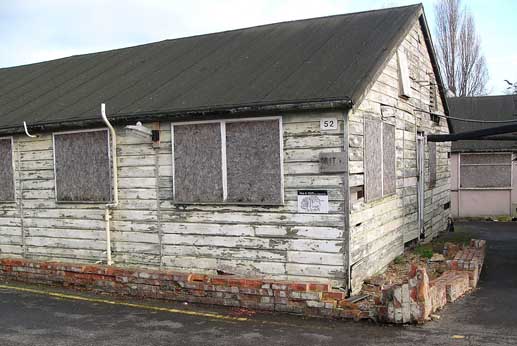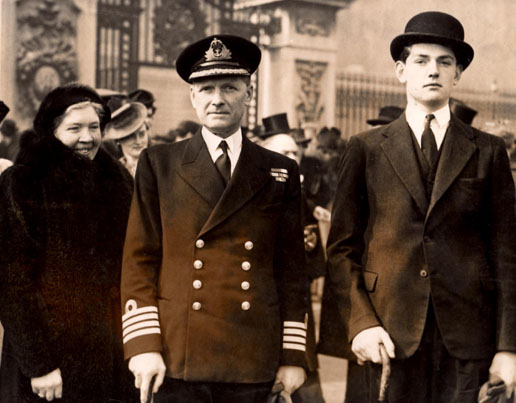When I could settle things at home and felt ready, I put all my own furniture into one locked room and let the house. When all was settled for the time, a War Job was the next thing to try for. I wrote to Esca Mortimer, who had been my youngest clerk at the Admiralty during the 1st War. She had done so extremely well that I had got her the first little rise. She had stayed on and continued to do well, and we had kept up our letters. I wrote to ask her if she would be my reference, when I applied for work at the Foreign Office, as she knew I was a worker. Her answer was "The Chief (Captain Travis) says ‘Come here.'" So, I went to Bletchley and had the great luck of walking in to one of the most interesting jobs possible – Enigma.

 Bletchley, which, I believe, now counts its inhabitants by the hundred thousand, was a tiny village – one street – with a few cottages on the railway. On the day of my arrival, I was settled into my billet (which was a very nice one, with an Engine Driver's wife). The next day, I started to work, and was just going to be shown what the work was, when two men came into the room (where I was being taught how to play about with intercepted German messages, picked out of the air by our men). Mr. Milner-Barry asked "Is there anyone here who can type?" There was a silence, and I said "I can type a bit." (I had spent some time in a French typing school at Nice.) A giant sort of typewriter was brought in and its peculiarities explained. Immediately, I was sat down at this big black machine, a message that had been interrupted was set up (with all the necessary complications), and the German came flowing out on the paper. After that, a roomful of typists soon appeared, and the work went at all possible speed.
Bletchley, which, I believe, now counts its inhabitants by the hundred thousand, was a tiny village – one street – with a few cottages on the railway. On the day of my arrival, I was settled into my billet (which was a very nice one, with an Engine Driver's wife). The next day, I started to work, and was just going to be shown what the work was, when two men came into the room (where I was being taught how to play about with intercepted German messages, picked out of the air by our men). Mr. Milner-Barry asked "Is there anyone here who can type?" There was a silence, and I said "I can type a bit." (I had spent some time in a French typing school at Nice.) A giant sort of typewriter was brought in and its peculiarities explained. Immediately, I was sat down at this big black machine, a message that had been interrupted was set up (with all the necessary complications), and the German came flowing out on the paper. After that, a roomful of typists soon appeared, and the work went at all possible speed.
This was to be my work. I stayed in the same room and same work with the German messages. After a time, I went to the struggling with messages that would not come out, or broke down in the middle, to find a way to get a bad message (or one not started even) to work out. Fascinating, but hard enough to make me sleep well in the mornings, for I chose the night shift.
Of course, I sometimes did day shifts, but I much preferred the night shift. There were fewer interruptions. It also meant that, on coming off work one morning, one had freedom till the following morning (9 o'clock). It allowed me to walk in all the woods and lanes for flowers and, actually, one day to follow the grounds on foot. One soon found out how much more one could do in the off time, on this shift, than in the day.
One day, I intercepted a message from Rommel to his staff, saying that he had left his monocle in the pocket of a pair of pyjamas back in Crete.
During the War, I had to take sick leave and have an operation (in London) for suspected cancer. Owing to my sick leave, I was able to go with Charles, to Buckingham Palace, to see Jack receive his D.S.O. from the Queen. When we came out from the gates, several photographers were begging to be allowed to photograph all the honoured men, and I steered unwilling Jack in front of a particularly apologetic little man, so that we had quite good photographs.
After the satisfactory operation, I went to dear Dorothy & John Peyton, who had asked me to Ascot to recoup. But I was longing to be back at work, and I think I went back too soon. I never quite recovered my strength and did not keep the girls to the job or enjoy my own so much.
Mr. Milner-Barry gave me a machine to myself, and so continued interesting struggles with messages that broke off and had to be somehow got going again. A job I liked very much. One night a message, very much wanted, had no beginning, and I took it and got it out by one of our tricks, which half pleased and half annoyed everyone. I was sorry when the hard messages were given a room to themselves, but they became too many.
BLETCHLEY
In the early months of 1940, EV travelled 100 miles from her home in Ipswich to join the team at Bletchley Park, in Milton Keynes, Buckinghamshire, England. Unlike the First War, when EV had relatives all around her London post who were glad to put her up, she had to billet with a local family this time. The invoice for EV's mother's headstone was mailed to her in July 1940: Miss Jauncey, c/o Room 47, Foreign Office, Whitehall, London. While at Bletchley, she worked in Huts 6 and Hut 14, Block D(6), and was listed as "Head of a watch of Modified Typex operators". On entering the service, she spoke fluent French, Italian and German, with a bit of Russian.
CAPTAIN TRAVIS
Sir Edward Wilfred Harry Travis, operational head of Bletchley Park during World War II.
ENIGMA & GIANT SORT OF TYPEWRITER
The Enigma machines were a family of portable cipher machines with rotor scramblers. Good operating procedures, properly enforced, would have made the ciphers unbreakable. Since these procedures weren't enforced, though, the Allies were able to reverse engineer the Enigma machine, making the ciphers readable. It appears that EV was one of the first (if not THE first) worker to actually employ the Enigma machine at Bletchley for decoding purposes. It would have suited her sharp and logical brain quite well, I think.
MILNER-BARRY
Sir Philip Stuart Milner-Barry would remain the head of EV's work at Bletchley.
ROMMEL
This message from Field Marshal Erwin Rommel was the only story that EV would ever share with her family. She had taken her Secrecy Oath very seriously and did not talk about her work with Enigma during World War II, taking her stories to the grave in 1986.
CHARLES
Charles Eliot Jauncey was the only child of Captain John Henry Jauncey and Muriel Charlie Dundas, nephew of EV. He accompanied his Aunt Eleanor to see his father receive his DSO.
JACK & HIS DSO
EV's brother, Captain John Henry Jauncey, R.N., received his DSO from the Queen on March 23, 1943.
DOROTHY & JOHN PEYTON AT ASCOT
Dorothy Helen Elfinstone married Ivor Eliot Peyton, cousin of EV. Their son, John Wynne William Peyton, Baron Peyton of Yeovil, was a good friend to EV in her lifetime and came up often to visit her.
NEVER QUITE RECOVERED MY STRENGTH
We have since learned that this was a common problem with the women at Bletchley, this problem of being worn out and unable to recoup. The emotional stress and physical strain must have been tremendous, and EV had to struggle with the added complication of working the night shift. She did, however, stay with the work until the end of the war.
ILLUSTRATIONS
1) Bletchley Typewriter
2) Women Workers at Bletchley
3) Hut 6 at Bletchley in the 21st Century
4) Eleanor, Jack and Charles Jauncey at Buckingham Palace (27 Mar 1943)
Text and images may not be
used without written permission.
Click for Contact Information

